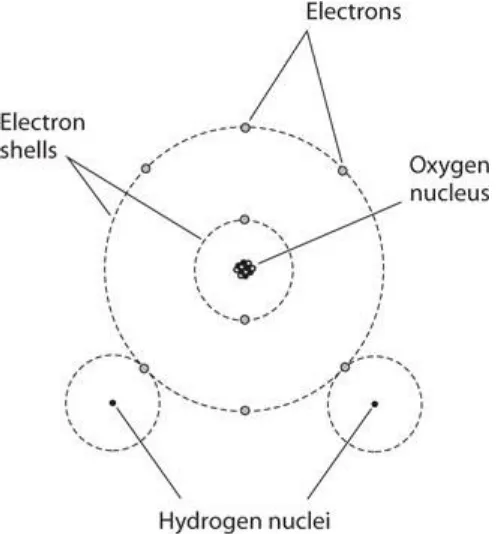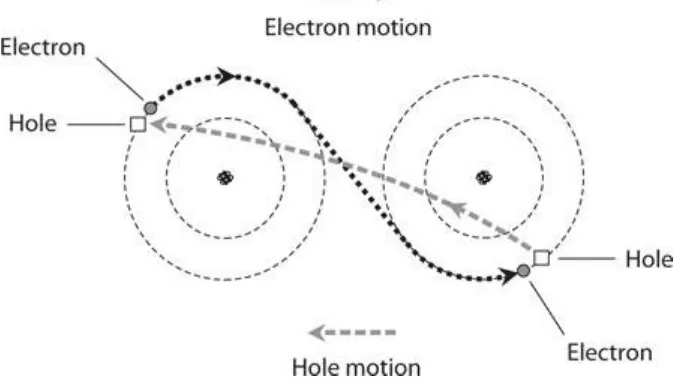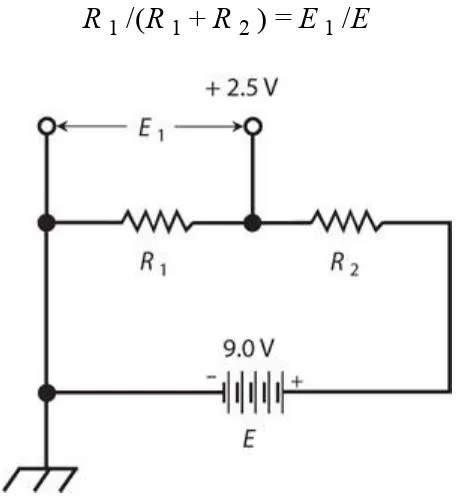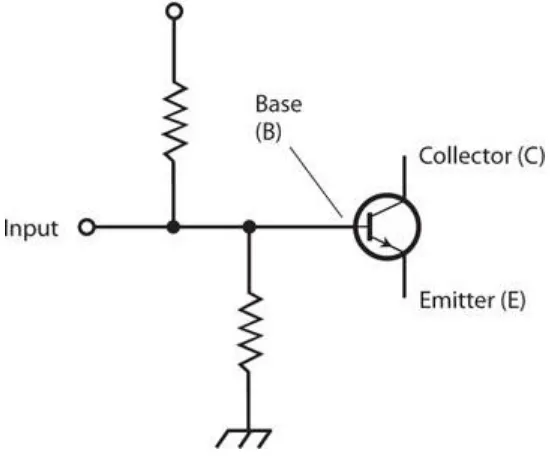Informasi Dokumen
- Penulis:
- Stan Gibilisco
- Dr. Simon Monk
- Sekolah: McGraw-Hill Education
- Mata Pelajaran: Electricity and Electronics
- Topik: Teach Yourself Electricity and Electronics 6th Edition
- Tipe: textbook
- Tahun: 2016
- Kota: New York
Ringkasan Dokumen
I. Background Physics
This section introduces the fundamental concepts of physics necessary for understanding electricity and electronics. It covers the structure of atoms, including protons, neutrons, and electrons, and explains how these particles interact to form ions and compounds. The section emphasizes the significance of atomic structure in determining the properties of materials, which is crucial for students to grasp the basics of electrical conduction. The relationship between atomic structure and electrical behavior lays the groundwork for further exploration of electrical principles, making it an essential foundation for learners.
1.1 Atoms
Atoms are the basic building blocks of matter, composed of protons, neutrons, and electrons. This subsection discusses the characteristics of these particles and their roles in forming different elements. Understanding atomic structure is crucial for students as it influences the electrical properties of materials, such as conductivity and resistance. The distinction between elements based on atomic number and the concept of isotopes are also introduced, providing a comprehensive overview of atomic theory.
1.2 Electrons and Ions
Electrons are negatively charged particles that orbit the nucleus of an atom, and their movement is fundamental to electricity. This subsection explains how the loss or gain of electrons leads to the formation of ions, which can conduct electricity. The concept of ionization is important for understanding how different materials behave under electrical conditions, making it vital for students studying electronics.
1.3 Compounds and Molecules
Compounds are formed when atoms of different elements bond together, while molecules consist of two or more atoms. This subsection highlights how the properties of compounds can differ significantly from their constituent elements, which is crucial for students to understand in the context of chemical reactions and electrical properties. The formation of water as a common example illustrates the practical implications of these concepts in real-world applications.
II. Electrical Units
This section focuses on the standard units used in electrical measurements, including volts, amperes, and ohms. Understanding these units is essential for students as they provide the framework for analyzing electrical circuits. The section explains how voltage represents electromotive force, current signifies the flow of charge, and resistance quantifies opposition to current flow. By grasping these concepts, students can accurately interpret and calculate electrical parameters, which is fundamental for practical applications in electronics.
2.1 The Volt
The volt is the unit of electromotive force, representing the potential difference that drives current through a circuit. This subsection elaborates on how voltage is generated and its significance in electrical systems. Students learn about the relationship between voltage and current, which is crucial for understanding circuit behavior and design.
2.2 Current Flow
Current flow is the movement of charge carriers, typically electrons, through a conductor. This subsection discusses the factors that influence current flow, including voltage and resistance. Understanding current flow is vital for students as it directly relates to the operation of electrical devices and circuits.
2.3 Resistance
Resistance is a measure of how much a material opposes the flow of electric current. This subsection explains the factors affecting resistance, including material properties and physical dimensions. Students learn how to calculate resistance using Ohm's Law, which is a fundamental principle in electronics.
III. Measuring Devices
This section introduces various measuring devices used in electrical circuits, such as ammeters, voltmeters, and multimeters. Understanding how to use these instruments is crucial for students as they provide the means to measure electrical parameters accurately. The section emphasizes the importance of measurement in troubleshooting and designing circuits, reinforcing the practical applications of theoretical knowledge.
3.1 Ammeters
Ammeters measure the current flowing through a circuit. This subsection discusses the principles of operation and proper usage of ammeters, highlighting their role in circuit analysis. Students learn how to connect ammeters in series and interpret the readings, which is essential for practical electronics work.
3.2 Voltmeters
Voltmeters are used to measure the voltage across components in a circuit. This subsection explains how voltmeters are connected in parallel and discusses their significance in diagnosing circuit issues. Understanding voltage measurement is critical for students to assess circuit performance and safety.
3.3 Multimeters
Multimeters combine the functions of ammeters and voltmeters, allowing for versatile measurements in electrical circuits. This subsection covers the features and uses of multimeters, including how to select the appropriate settings for different measurements. Mastery of multimeter usage is vital for students engaging in hands-on electronics projects.
IV. Direct-Current Circuit Basics
This section covers the foundational concepts of direct-current (DC) circuits, including schematic symbols, circuit simplification, and Ohm's Law. Understanding these basics is essential for students as they form the building blocks for more complex circuit analysis. The section emphasizes the importance of schematic diagrams in visualizing circuit designs, which is a crucial skill for aspiring engineers and technicians.
4.1 Schematic Symbols
Schematic symbols represent various components in electrical circuits. This subsection introduces common symbols used in circuit diagrams, providing students with the visual language necessary for circuit design and analysis. Familiarity with these symbols is essential for effective communication in the field of electronics.
4.2 Ohm’s Law
Ohm's Law relates voltage, current, and resistance in electrical circuits. This subsection explains the formula and its applications, enabling students to perform calculations related to circuit behavior. Mastery of Ohm's Law is fundamental for understanding circuit dynamics and troubleshooting.
4.3 Circuit Simplification
Circuit simplification techniques help in analyzing complex circuits by reducing them to simpler equivalents. This subsection discusses methods such as series and parallel combinations of resistors. Learning these techniques is crucial for students to manage real-world circuit complexities effectively.
V. Direct-Current Circuit Analysis
This section delves into the analysis of direct-current circuits, focusing on current and voltage distribution in series and parallel circuits. Understanding these principles is critical for students as they provide insights into how circuits function under different configurations. The section emphasizes the application of Kirchhoff’s laws, which are fundamental for circuit analysis and design.
5.1 Kirchhoff’s Laws
Kirchhoff’s laws govern current and voltage in electrical circuits. This subsection details Kirchhoff’s First and Second Laws, providing students with essential tools for analyzing complex circuits. Mastery of these laws is vital for understanding circuit behavior and ensuring accurate designs.
5.2 Voltage and Current Distribution
This subsection explores how voltage and current are distributed in series and parallel circuits. Understanding these distributions is crucial for students to predict circuit behavior and troubleshoot issues effectively. The section reinforces the practical applications of theoretical concepts.
5.3 Power Distribution
Power distribution in circuits is a key concept for understanding energy consumption and efficiency. This subsection discusses how power is shared among components in series and parallel configurations. Students learn to calculate power distribution, which is essential for designing energy-efficient circuits.
VI. Resistors
This section focuses on resistors, their purpose, types, and specifications. Understanding resistors is essential for students as they play a critical role in controlling current flow in circuits. The section emphasizes the importance of selecting appropriate resistors based on circuit requirements, which is a vital skill for practical electronics design.
6.1 Purpose of the Resistor
Resistors limit current flow in electrical circuits. This subsection explains the fundamental role of resistors in protecting components and controlling voltage levels. Understanding the purpose of resistors is crucial for students to design safe and functional circuits.
6.2 Types of Resistors
Various types of resistors exist, each with unique characteristics and applications. This subsection introduces fixed, variable, and specialty resistors, providing students with insights into their uses in different scenarios. Familiarity with resistor types is essential for effective circuit design.
6.3 Resistor Specifications
Resistor specifications, including resistance values and tolerances, are critical for selecting the right components for circuits. This subsection discusses how to interpret resistor markings and ratings, enabling students to make informed choices in their designs. Mastery of these specifications ensures reliability and performance in electronic applications.









